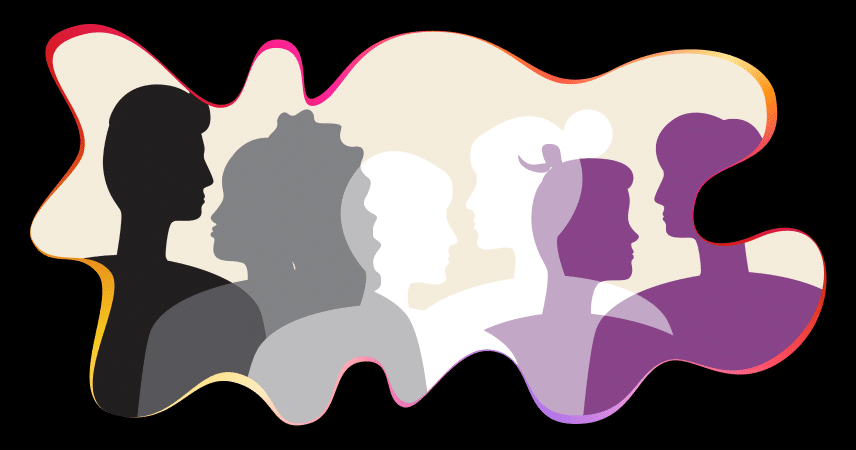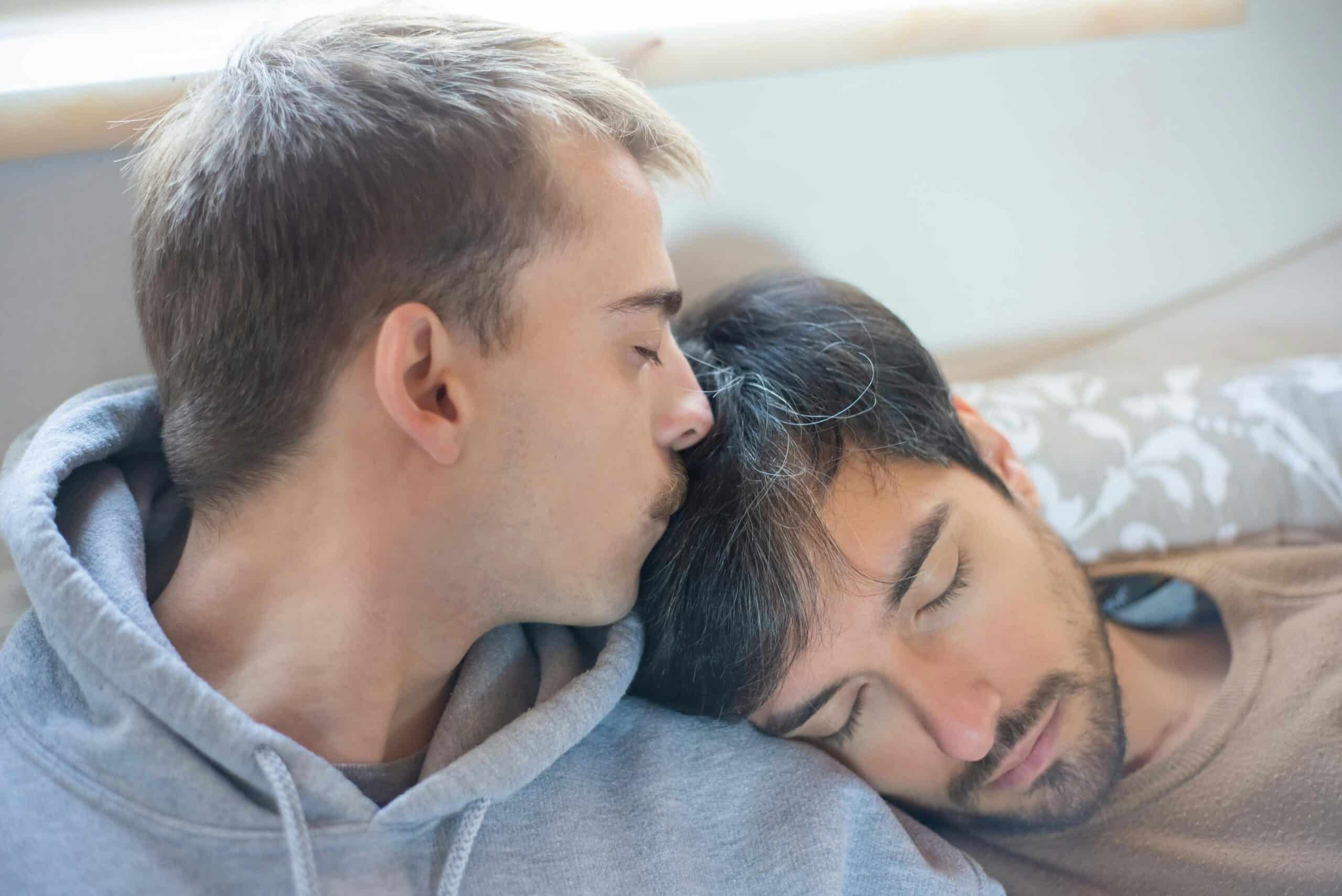
For example, the “B” commonly refers to bisexual – someone who is sexually and romantically attracted to both male and female genders (or more). Within that large category, though, there are “variations on this theme.” There are bisexual aromantics, for example, and biromantic asexuals too. They have their own unique identities which deserve recognition, dignity, and respect within the larger community. It’s important to dedicate some time to that recognition, thus this piece on biromantic asexuality.
So here’s to all the biromantic asexual people out there – this one’s for you!
Asexual Looks (@thisiswhatasexuallookslike) • Instagram photos and videos
Defining a Biromantic Asexual
There are both general and personal/unique definitions of this term. So let’s break it apart first.
A bisexual is any individual who is attracted to two or more genders – lesbian, gay, trans, other bisexuals, etc.
A biromantic is someone who seeks romantic attachments with a variety of gender identities.
Asexual means having little-to-no sexual attraction to others.
Putting all of this together, we have someone who can feel romantic attraction to multiple genders but who is not sexually attracted to them.
Now, on a personal level, there are degrees and levels of these definitions. All biromantic asexuals cannot be lumped into a single spot on the LGBTQ+ spectrum
- Some may experience sexual attraction at different levels and at different times
- Some may be romantically attracted only to a couple of gender identities, not necessarily multiple genders.
- They all want their unique identities respected and honored
- They do not want others making assumptions about or stereotyping them.
The point is this: in the biromantic asexual community, one size does not fit all, even though they all may identify as belonging to this sub-community, not others.
Stereotypes and Myths
Most are already familiar with the stereotypes and myths surrounding bisexuals, and there are more that can be added when the asexual “label” is also attached:
It’s just a phase.
When they find the right person, they’ll be sexually attracted in a normal way. No. While many asexuals form some levels of sexual attraction, others have no desire for any sex at all throughout their entire lives.
They only have a romantic attraction to other nonbinary people.
No. Bisexuals do form relationships and partnerships with straight people, and biromantics who are also asexual. They can and do have romantic orientations toward straight people too. While some of them are looking specifically for asexual dating, this in no way compromises their gender identity.
It’s the same as celibacy.
No. Celibates choose to give up sex, usually for religious reasons. Catholic priests and nuns are the most obvious examples, but Buddhist monks and Hindu spiritual leaders do too. Asexuals do not choose to give up sex – they just don’t want it, or at least want less or little of it.
Asexuals have Medical or Mental Health Conditions
Let’s look at some real facts based upon actual research. First, asexuals make up about 1% of the world’s population. While that is not a huge number, it is significant enough that some psychological and medical researchers have actually done some work here.
Much of the research on asexuality is summarized in a great article by author and asexual herself, Julie Sondra Decker, published in Psychlogy Today. While much of her writing is fiction, she has also published what is considered a definitive book on asexuality, titled, The Invisible Orientation. Her overall point is that, yes, there may be some mental factors involved in asexuality, but the verdict is pretty much still out on that, and that asexuality is a valid gender identity. She states the following:
“It’s doubly important to recognize that some people with mental and physical illnesses or abusive pasts are also asexual, and that the intersection of complex elements of identity do not invalidate asexuality (in general or in each particular case). In other words, mentally ill and physically ill asexual people do exist, and their asexual identity, while sometimes completely irrelevant to other conditions and situations, is not always completely separable from their complicating factors–which does NOT make it less legitimate. Asexuality isn’t a diagnosis, and it isn’t something that can only exist if nothing else explains or intersects with a person’s asexual experience.”
Occasionally, there may be a medical condition that results in asexuality. Information can be found on medical websites like Healthline media, if you are interested.
Asexuals are Never Sexually Attracted to Others
Again, not true. There are levels of asexuality just as with any other romantic/sexual orientation.
One of the most popular articles on this whole topic of variations within asexual identities has been written by Morgan Pasquier, GLADD Campus Ambassador at the University of Washington. Titled “Explore the Spectrum: Find Your Ace Community,” it was published on the GLADD website. In the article, she states, “It’s important to remember, however, that attraction and action are not always the same: some asexuals may be repulsed by the idea of sexual contact and won’t engage in it, but others may be sex-neutral or sex-positive and will have sex. Some asexuals have a libido or will masturbate but won’t be open to sex with someone else, while others may not have a libido but will have sex with a partner because of the sense of connection that comes from it. Everyone experiences their asexuality differently, so it’s important not to make assumptions about an asexual person or their experiences.”
One point she makes is that asexuals will be romantically attracted to someone and thus have a sexual life with that person, because of that connectedness or because they want to satisfy that partner’s sexual needs.
What Does Biromantic Asexuality Mean for Relationships?
Like everyone, biromantic people who are also asexual have a wide variety of attachments in their lives. They have family members, friends, spouses, children, casual and serious affairs, and allies who support their identities. And all of the individuals in these alliances may or may not understand, support, or choose to continue those connections once they learn of a biromantic asexual’s identity. And so the biromantic asexual must make choices, much as all members of the LGBTQ+ community must do. Navigating all of these relationships can be challenging.
Relationships With Family and Friends
It can be hard for all nonbinary people to come out and explain their sexual orientation to those who are close to them. So it’s important to think about those loved ones individually and how to approach each of them. There are plenty of options here:
- Choosing the time and place to inform others about their sexuality is completely up to the biromantic asexual person
- Coming out at all is also a matter of choice – maybe only to a few trusted loved ones, maybe publicly to everyone, or maybe not at all
- Those without authoritative experiences with the full LGBTQ+ community spectrum may need a detailed explanation of what biromantic asexuality really means. They can be referred to any of several resources, especially the Trevor Project which will let them securely process all of the information they need.
- Depending on how a loved one might react to the news, asexual biromantic people can choose a face-to-face meeting or any of the digital options available – phone call, text, email, even video chats.
Being in a Relationship With a Partner
Here is where the “rubber meets the road.” You are romantically attracted to someone. At this early stage, you feel no sexual attraction and you may never feel that. You are also bi, which means you can have a romantic attraction to two or more genders.
At the very onset of a relationship, you must be fully honest about your sexual identity. It’s simply not fair to pretend to be someone you are not. Be completely honest about how you feel about sexual relationships, including any relevant experience you may have had with them.
If this new relationship has a mutual romantic attraction, then you both have a good start. It will be important that both of you agree on your expectations. Remember, romantic attraction can manifest in many ways in the dates and activities you choose:
- showing lots of physical affection is common and natural
- having dates and sharing common interests will only make you closer
- when people experience mutual romantic attraction, they want to spend a lot of time together, and this should mean that they want to do nice things for each other
- partners who experience romantic attraction and who then move in together should be willing to share all of the responsibilities of maintaining a household
- talking about future goals and how they include each other means a romantic partnership that promises to be long-term.
Now, if romantic relationships are between two asexuals, then their sexuality is obviously totally compatible. If, though, the non-asexual partner has had a previous sexual life, deeper communication must happen.
A biromantic asexual person may not be in a relationship with someone who identifies with the same romantic or sexual orientations. This means that it is important to communicate how each person feels and discuss what each person feels comfortable with. Many asexuals in strong loving attachments may develop some sexual attraction too; if not, they may be more than willing to honor their partner’s needs and feelings and agree to sexual activity for the sake of the relationship, even though they continue not to be interested.
How to Be an Ally
If you are a friend to a biromantic asexual and want to provide support, then it will be important to show that support in the following ways:
- Be a good listener. You will want to know all about this identity.
- Do some independent research so that you have a “scientific” understanding
- Ask any questions you have and listen carefully to any answer your friend gives.
- Include your friend in your own social gatherings
- Confront those who make derogatory comments or offensive jokes about the LGBTQ+ community as a whole or who repeat myths or stereotypes about bi’s or asexual people
- Connect with others online who are providing authoritative experiences with those who identify as asexual biromantics
- Maybe get involved in LGBTQ+ activism, if only attending events
Are You a Biromantic Asexual?
Are you unsure of where you fall on the LGBTQ+ spectrum but you think you may be a biromantic asexual person? Here are some questions to answer for yourself:
- Are you romantically attracted to more than one gender, maybe multiple genders?
- Do you look for a romantic relationship but not for sexual relationships?
- Does your romantic orientation drive the relationships you seek?
- Are you romantically attracted to more than one gender but do not feel sexually attracted to them?
- Have you had partnerships because you were romantically attracted to them but then haven’t enjoyed the sex at all or very little?
If you have answered yes to these questions, you are probably a biromantic asexual. Embrace your feelings, your identity, and your orientation. Asexual biromantic people can have fulfilling lifestyles and partnerships, and you can too.
Let’s Sum It All Up
A biromantic asexual person is one who seeks out romantic encounters and partnerships with multiple genders, usually nonbinary, but not necessarily. They operate from a romantic orientation, not a sexual one.
A biromantic asexual will enter a romantic relationship without the need or desire to add a sexual dimension to that relationship.
Biromantic asexual people fall within many sub-identities, from avoiding sex altogether to enjoying small amounts of sex, to accommodating a partner’s need for sex because they love them.
Biromantic asexual people are not a mentally ill nor do they have a medical condition – their sexual orientation is normal for them.
If you identify as an asexual and also as a biromantic, more power to you. You should embrace your identity and seek the fulfilling life you deserve.




